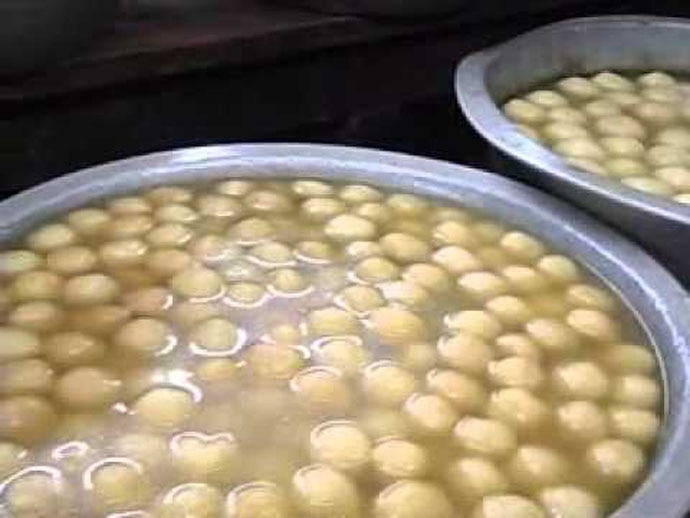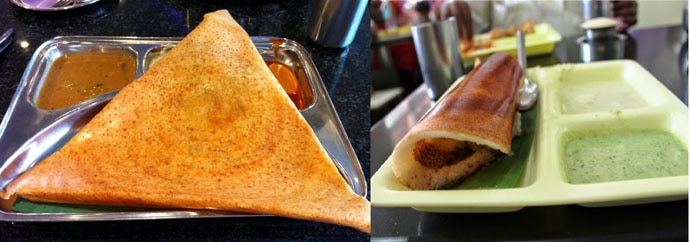Not just the rasgulla. Here are other food items we Indians love to fight over

A rosogolla from any other state does not taste just as sweet.
The controversy on who invented the rasgulla — Odisha or Bengal — has erupted once again, and this time, under rather unfortunate circumstances.
Shorn of regional identity markers, though, the debate could be comparable to the one over deciding which came first — the luchi or the puri.
Luchi, the favourite of all Bengalis (the Assamese call it luci), is made with maida or refined flour. At breakfast, it is had with alurdom or ghoogni. On Sundays and on birthdays, with kosha mangsho. At one’s granny’s place, with shaada alur torkari, a potato stew whose core hinges on the use of just kalo jeere (Nigella seeds) for tempering. And in the tiffin that your mom might have packed for you to school, college or work, with roshogolla. At times, just with sugar sprinkled on it. Or even mishti doi.

Puri, on the other hand, is made with aata or whole wheat flour. It is popular across India — north, west, even the south…except in the luchi lands of the east. Puris can be of different sizes and textures. In the north, it is had with alu ki sabzi. On Ashtami, with halva and puri. In the south, with a vegetable korma. In the west, with alu ki sabzi — sukhi or geeli — or with shreekhand or aamras.
How is this discussion on luchis and puris moot to the topic, you ask?
Well, just as the two — luchis and puris — are different, so are the rasgullas of Bengal and Odisha.
The roshogolla, as we call it back home in Bengal, is spongy in texture, white in colour, and usually hollow at the core.

The pahala rosgola in Odisha, from what I gather from social media posts and picture uploads, has a denser texture, is not spongy, and has a more earthy colour.
One is from Bengal and the other from Odisha.
And each has its own unique characteer and offers a completely different taste and sensorial experience.

Of course, one can argue that food is about emotion, and these facts do not matter. But in this case, they do.
What is wrong with you Bengalis and Odiyas, I was asked recently. Why have you guys made rasgulla the most controversial dish in India?
Well, it is not!
A food writer friend of mine had once written about her favourite dosa joints in Bangalore on a website — and was then pilloried by folks in Chennai about how these are not a patch on what one gets in Chennai. The website editor was happy with the controversy as that meant more hits, but the fact of the matter is that the dosa available in both cities is rather different. The Bangalore ones are my favourite, thanks to their crunchy texture.
Or ask food bloggers who share sambar recipes and get bombarded by a million comments on why they are wrong. ‘My grandmother adds jaggery’, ‘my mother adds drumstick’, ‘my priest doesn’t add pearl onion’, ‘that is not the Brahmin sambhar’ — the opinions keep flying in, till the hapless blogger disables comments.
Or ask the TV show producer who made a documentary on curries and got lambasted for suggesting that curries were an Indian dish and not a symbol of colonial oppression — followed by an even more nuanced discussion on whether the dishes shown in the show are curries in the first place!
Try telling a Hyderabadi that you prefer the biryani of Lucknow or Kolkata, and be prepared to be not indulged. ‘Humbug, that’s a pulao and not a biryani,’ they will say, and dismiss you without a second thought.

Did you know that while Hyderabadis dominate all discussions on biryani on social media, there are actually many other varieties of biryani in the south — for starters, Moplah in Kerala, Dindigul and Ambur in Chennai. Even Hyderabad has moved on currently to the more Arab-originated Mandi rice.
You still think that the rasgulla evokes the highest controversy?
Try saying that you like the Alphonso mango on social media, as I once did.
The Gujaratis and the Maharashtrians fought over where you get better ones. The UP-ites then took over and said the langda was king. “How can you turn your back to the poetry of the himsagar,” my fellow Bengalis wrote in, with the sense of passive aggression that defines us. The Goans and those from south Indian states wryly smiled and continued to eat their myriad local mangoes, not even bothering to comment in public.
Yes, we Indians are passionate about our food.
That is what leads to the richness and variety of it.
And that’s why we fight about it.
When things get out of hand, though, it might be worth telling oneself that opening one’s mind and heart to this diversity can only lead to many more fantastic meals, experiences and friendships.
Something to chew on.
As for me, this entire rasgulla affair has evoked just one emotion. The desire to go to Odisha to try the pahala rosgola. And the chhena poda, while I am at it.

